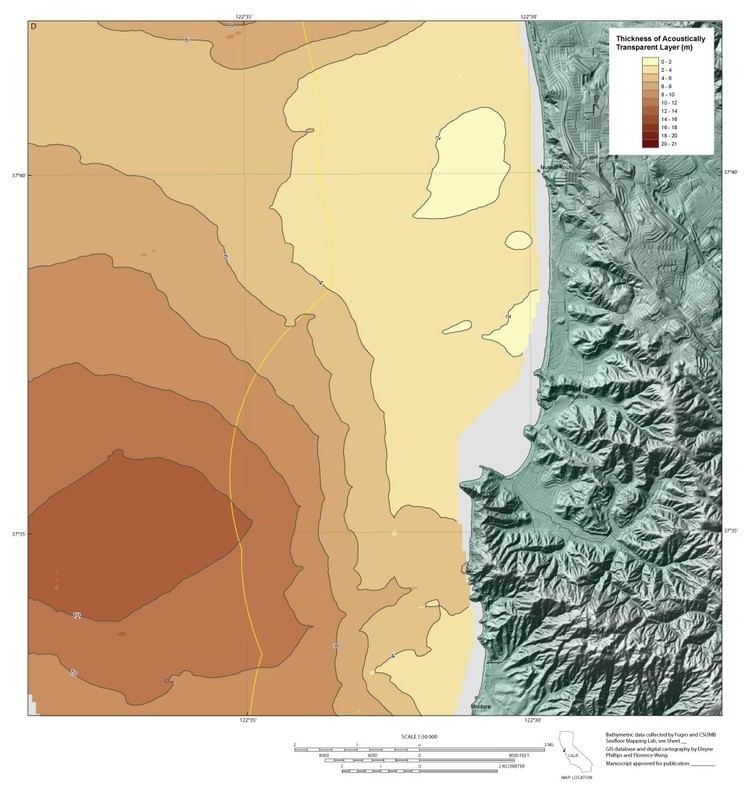 | ||
An isopach map illustrates thickness variations within a tabular unit, layer or stratum. Isopachs are contour lines of equal thickness over an area. Isopach maps are utilized in hydrographic survey, stratigraphy, sedimentology, structural geology, petroleum geology and volcanology.
An isopach map is similar to an isochore map, but these terms actually describe different methods of displaying thickness variations within a layer.
Thus, an isochore and isopach map are the same only when both the top and bottom surfaces of the layer shown are horizontal (i.e., the true stratigraphic and true vertical thicknesses are the same). When the layer shown is inclined, as is usually the case, the thicknesses displayed in an isochore map of the layer will be greater than the thicknesses displayed in an isopach map of the same layer. Unfortunately the terms isopach and isochore are widely confused, and many times maps of True Vertical Thickness (TVT), which by definition are isochore maps, are incorrectly labeled isopach maps.
